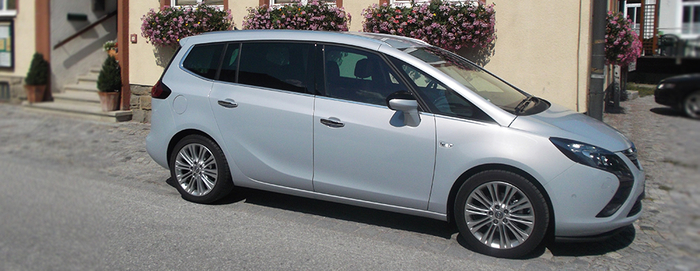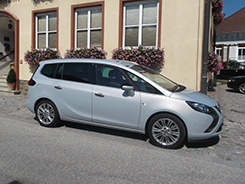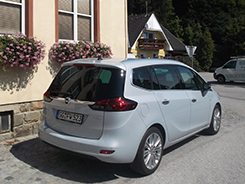Vauxhall Zafira Tourer 1.6 CDTi

European Press Launch, Vienna
Although we have driven the Zafira Tourer many times before, this was our first opportunity to drive one of General Motors next generation of engines – the 1.6 CDTi. The Zafira Tourer has been chosen as the first model to receive this new diesel unit. Then more models in the Vauxhall range will be offered over the coming months.
GM says that they have an engine offensive and this 1.6 diesel is the first of 13 new engines due in the next three-years. It is likely that every current engine will be obsolete and replaced by 2017. The current range of engines are large in size, heavy and do not compete with most other manufacturers cleaner more efficient engines.
 Looking at the technical aspects of this new unit, the cylinder block is made of aluminium making it light-weight and therefore more efficient. The engine designers, who are based at the GM Power Train Engineering Centre in Turin, were given the brief to make it best in class for noise, vibration and harshness. They worked on a variety of projects to ensure that the new engine was fitted with the best components that were durable, long lasting and had to be quiet.
Looking at the technical aspects of this new unit, the cylinder block is made of aluminium making it light-weight and therefore more efficient. The engine designers, who are based at the GM Power Train Engineering Centre in Turin, were given the brief to make it best in class for noise, vibration and harshness. They worked on a variety of projects to ensure that the new engine was fitted with the best components that were durable, long lasting and had to be quiet.
This new engine does not have any ‘carry-over’ parts from any other previous engines; every component is different. The designers and engineers started with a clean piece of paper and looked at every single part in and around the engine to see what could be improved, from the smallest nut and bolt, to the pistons and crankshaft. This new engine is also Euro 6 compliant which is well ahead of implementation of the new rules from September 2014.
We drove the Zafira on a variety of roads around Vienna and took in the wonderful sights of Austria, on a nice sunny, warm day. The car lived up to its expectations with reduced engine noise intrusion in the cabin. This combined with hardly any road or wind noise made it a very quiet and refined drive.
We would have expected a 1.6 diesel engine to have felt underpowered and likely to be the last car away at traffic lights, in a relatively heavy 7 seat vehicle like this. But we found the 136ps that this unit develops was more than adequate in all the situations we tried it in.
It happily sat on the motorways at 130kph (80mph) and felt as though it had power to spare. It never felt as though it lacked acceleration at any speed or when setting off from a standstill.
 GM had to make changes to their engines, as they were lagging behind and of course with these new, smaller, lightweight engines, it now gives the car design team a better chance of creating better looking cars.
GM had to make changes to their engines, as they were lagging behind and of course with these new, smaller, lightweight engines, it now gives the car design team a better chance of creating better looking cars.
Their cars can be more compact, with larger interior cabins as the engine will no longer take up as much space. The bonnets can be lower and more aerodynamic as the engine is lower, which in itself makes it more efficient and lowers Co2. Add up all these advantages and GM could be onto some winning future designs and lower running costs.
The Zafira we drove had Co2 emissions of 109g/km and although we couldn’t test the fuel consumption on the drive, the official combined figure is 68.9mpg.
Martin Ward, Manufacturer Relationship Manager


